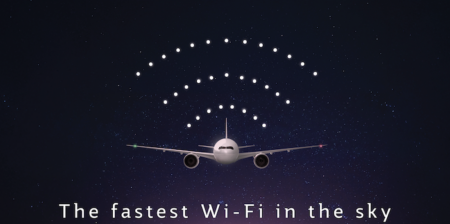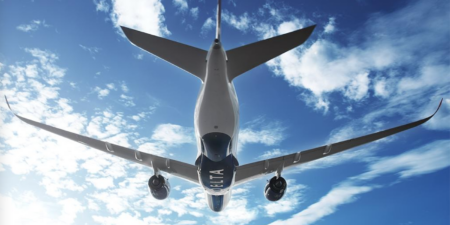Designing an effective graphical user interface (GUI) for an IFE system has never been more difficult. The depth and range of content offered by most airlines today means many option buttons are required, but they must be presented in a way that simplifies choice for the passenger and creates an enjoyable user experience.
At Thales Avionics, the man tasked with creating such interfaces is David Pook, director of system applications marketing (pictured left), who moved into the role from that of director of product development.
“It’s very subjective what looks elegant to one may look complicated to another,” he says of GUI design. “One thing we really have to take into consideration in our market is that these systems aren’t just for the tech-savvy. Your grandmother who doesn’t have a computer might sit on an aircraft for 12 hours and you want her to be able to find a movie and play it without causing too much trouble. One of the big challenges is how do you make something simple for those who are not tech-savvy so it is intuitive and they just get it, but also rich for those who are used to iPads and all those gadgets. It’s a bit of an art form to do that.”
But surely the Apple GUI is one of the simplest to use, which is why so many similar interfaces are now offered on the market? “Everyone claims it’s an amazing user interface, but I handed my iPad to my mother and she had no idea what to do with it. A couple of basic things like showing her how to swipe, touch and pinch and she got the basics, but it takes some learning it probably took her a month to learn how to switch between things,” states Pook. “But on an aircraft you might only have 12 hours with the system and you don’t want anyone to get frustrated and have to call the flight attendant. One of the big challenges is for the GUI to be simple but also appropriate, with some enticements so there are rewards if you’re willing to dig a little deeper. There should be rewards and more stuff to discover, but if you don’t have the inclination, you should be able to easily get to the simple things to keep you happy.”
To keep passengers like mother Pook happy onboard, other basic considerations have to be made, such as font size related to viewing distance, and the size of the touchscreen buttons. However, that Apple-style interface is becoming expected: “We try to embrace the typical swiping gestures people are used to on these devices now some of our legacy systems didn’t have that feature but people would try to swipe them, so we see it is now the expectation amongst most people to swipe. We try to incorporate things that become standard on those sorts of devices.”
Getting funky
Beyond operational aspects, another key consideration is how the GUI should represent an airline’s brand. “That really goes all over the place,” says Pook. “You have some very traditional, elegant classical airlines, and you have some very fun, funky and hip airline personas, and you want to carry that feeling through the GUI. You have to go way beyond just the color scheme.
“If an airline is about being trendy, new and funky then you want to add things that are surprising to the passenger. You can use words that are new and energetic, and apply colours to match, with things ‘popping’ on the screen. But you don’t want it to be distracting or too busy, so it’s always about trying to draw a fine line. We have some very good design agencies we work with. I don’t do the designs myself we have two or three design agencies, which we choose depending on the airline’s personality,” says Pook.
But whatever the airline’s personality, Pook’s experience shows that while they all want to be distinctive, they also have some distinct similarities. “We do some research on an airline, give a brief to the design agency, and they give us five or six concepts. We then take those concepts to the airline and one of them usually really resonates. But that design could be completely inapplicable to the next client. However, there are some core fundamentals you need to maintain, so there is a lot of similarity, even if you look at the opposite extremes of that experience.”
In too deep
Movies are the most popular feature in IFE so the passenger should be able to browse and select them quickly and simply and be able to find the best movies in two or three keystrokes. “It is easy to become overcomplicated for example Emirates has over 1,400 channels and has to put a printed book in the seatback to help people find things. Because of the way they’ve organised the GUI, you could spend hours just browsing through everything,” says Pook. “It’s rich in depth but it’s hard to get to something like the latest action movies, but we’re working on improvements with different ways to get to things.”
These ideas include a simple search function and some more observational functions. “For example, a passenger could be able to search for something like ‘Mission Impossible’. Or what about asking passengers what they’re interested in and recommending titles? Or perhaps tracking their use of the system and making recommendations to take them that they might not have thought about, but are in the same genre they’re interested in?” he adds. “There are different creative ways to do that, but no right or wrong answers. It’s always good to validate your assumptions through usability testing with a very broad demographic. Airlines have lots of folks flying and you want to make sure that when you put something in front of them they won’t get frustrated.”
Another dimension
Pook and his team have created a GUI concept, which is a 3D cube with six facets, each of which activates a different function such as movies or TV. The passenger can swipe the cube on the touchscreen, or even use a gesture to rotate it, and then select the desired function. The concept was designed with the TopSeries AVANT system in mind, and while it is enjoyable to use and visually appealing, it has an obvious limitation in that it can only have six sides. Adding more facets would make the interface too difficult to operate as it would become more spherical.
“It’s purely a concept, and we haven’t implemented it with any airline as an option yet,” explains Pook. “It has its limitations but I think its very good at highlighting the capabilities of the system and that we can take it another step it’s very responsive, three-dimensional, and fully interactive. How we end up actually flying it with an airline we’ll see. We didn’t design it for the intuitive aspects, we designed it for demonstration purposes. I can think of three or four designs we’re working on that are better from a simplicity and intuitiveness standpoint.”
The problem, in Pook’s eyes, is that if you view the cube face-on, it is not immediately apparent that there are other facets with further options. However, as a new idea, and an alternative to the familiar swipe and pinch interfaces, it could well have potential.




